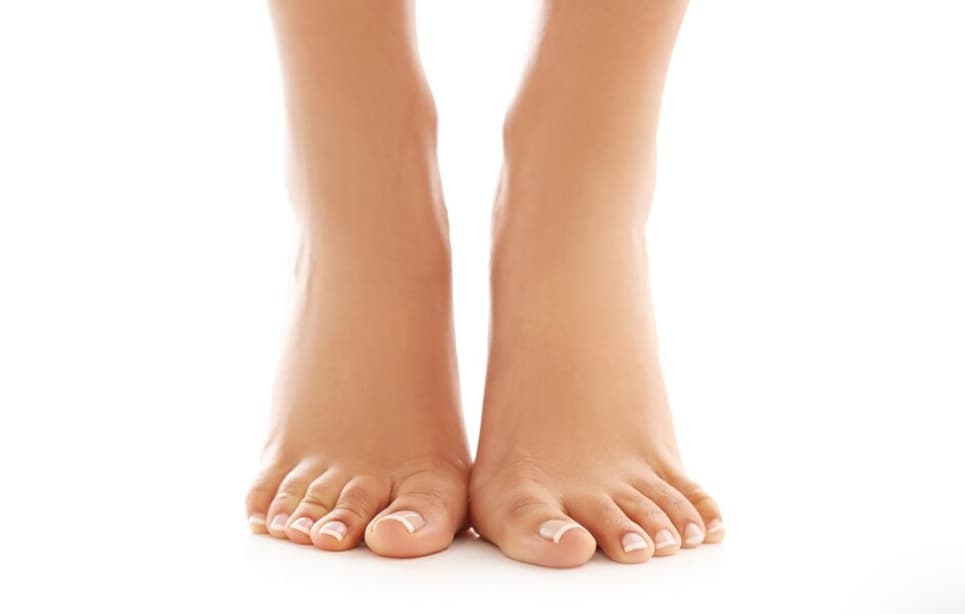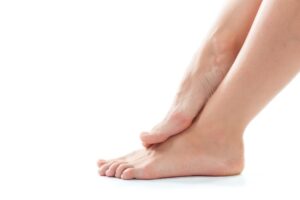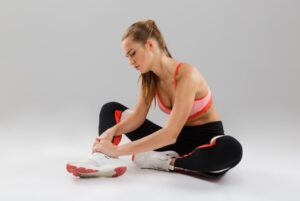Key Questions Addressed in this Article:
- What are curly toes and how are they characterized?;
- What are the root causes that lead to the development of curly toes?;
- How can one identify the signs and symptoms of curly toes?;
- What potential complications can arise if curly toes are left untreated?;
- What comprehensive treatment strategies are available for managing curly toes?;
- What preventative measures can be taken to avoid the development of curly toes?;
- How does proper footwear play a role in both the prevention and management of curly toes?;
- What specific conditions are related to curly toes, such as clinodactyly and toe deformities like hammer, claw, and mallet toes?;
- How effective are non-surgical interventions in treating curly toes, and when is surgical intervention considered?;
- What are the common misconceptions about curly toes, and how does the guide address them?
Discovering curled digits in oneself or a child often leads to questions about the origins of this condition, its potential health implications, and the possibility of it correcting itself without medical intervention.
If you’re dealing with curled toes, a condition that often accompanies chronic ankle instability, you may also like reading about how to fix this issue, providing practical steps towards recovery and enhancing ankle support.
Understanding Curly Toes
When individuals seek consultation for curly toes, they typically present with one of two primary conditions:
- Clinodactyly: This condition leads to one or more toes being abnormally curled, often noticeable from birth. The curvature may become more pronounced as the child begins to move and walk, highlighting the need for early detection and management;
- Toe Deformities: This category encompasses conditions like hammer, claw, and mallet deformities, each defined by the curvature’s specific location. These abnormalities impact various joints, leading to unique shapes and patterns of bending in the affected digit.
The Root Causes of Curly Toes
The underlying reasons for curly toes vary significantly based on the specific type of bending observed. Clinodactyly, for example, arises from uneven growth in bone, with one side of a growth plate developing more than the other, leading to curvature. Furthermore, the contraction of tendons on the foot’s underside can cause bending. Such cases might be inherited, associated with conditions like Down’s Syndrome, or idiopathic, with no clear cause identified.
Various factors contribute to the development of toe deformities, including:
- Footwear: Tight or narrow shoes may force toes into a cramped position, promoting bending and curling. This is particularly concerning for those with bunions or high arches, as reduced toe box space exacerbates the issue;
- Toe Injuries: Past injuries to toes or feet can make curly toes more likely to develop as a secondary condition;
- Genetics: An inherited predisposition to certain foot shapes or structures may increase the risk of toe deformities;
- Arthritis: Conditions like rheumatoid arthritis can lead to joint inflammation and deformities, including in the toes, thus elevating the risk of curly toes;
- Muscle Imbalances: Disproportions in the muscles and tendons that facilitate toe movement may cause the toes to curl, resulting in deformities such as hammertoes;
- Nerve Damage: Neuropathy or nerve damage in the foot can lead to muscle weakness and, consequently, toe deformities;
- Bunions: Deformities in the big or little toe can cause muscle weakness and joint bunching in the forefoot and toes, leading to deformities like mallet, hammer, and claw toes.
Identifying the Signs and Symptoms of Curly Toes
Curly toes, encompassing conditions such as clinodactyly and various toe deformities, present with a range of symptoms that can vary in severity from person to person. With clinodactyly, the condition typically affects the third, fourth, and fifth toes. Individuals might experience pain or discomfort due to the abnormal positioning of the toes, particularly when subjected to pressure from snug footwear. However, not everyone with clinodactyly experiences pain.
Common issues resulting from abnormal toe positioning include the formation of corns and calluses due to constant rubbing or pressure. Blisters can also develop, adding to the discomfort. The toenails are not spared; they may become bruised, thicken, flatten, or alter in shape due to the ongoing stress and pressure.
Toe deformities share similar symptoms, with blisters, corns, calluses, and discomfort being common. Unlike clinodactyly, which is often present from birth, toe deformities usually develop over time. Initially, individuals may have straight, normal-looking toes, which gradually change shape in response to various factors like improper footwear, genetic predisposition, or other underlying conditions.
Potential Complications of Untreated Curly Toes
Leaving curly toes untreated can lead to a series of complications that significantly impact daily life and physical activities. The most prominent issues include persistent pain and discomfort, often exacerbated by recurrent corns and blisters. These conditions not only cause direct discomfort but also contribute to the challenge of securing comfortable and suitable footwear. As a result, individuals may find it increasingly difficult to remain standing for extended periods or to participate in activities that require prolonged foot use, such as hiking or engaging in long walks with friends and family.
Comprehensive Treatment Strategies for Curly Toes
Curly toes can be managed through a variety of strategies, tailored to the individual’s specific conditions such as the extent of toe curvature, symptoms, and root causes. After a thorough evaluation, a personalized treatment plan can be developed, potentially including:
- Supportive Devices: Toe props, separators, and splints may be used to alleviate symptoms like pain due to toes rubbing against each other;
- Footwear Adjustments: Opting for shoes with a broader toe box can provide the necessary comfort and support, preventing further aggravation of symptoms or worsening of the condition;
- Custom Foot Orthotics: These devices are designed to redistribute weight and pressure evenly across the toes, easing pain and hindering further curvature;
- Stretching Routines: Exercises aimed at loosening any tight muscles or tendons in the feet that may be contributing to the toe curvature;
- Foot Mobilization Therapy: This approach focuses on freeing up the joints and surrounding soft tissue to improve joint alignment, supported by case studies showing radiographic evidence of improvement;
- Routine Symptom Management: Regular care for symptoms such as corns and calluses, including debridement and specialized skin care, can prevent worsening of discomfort;
- Surgical Intervention: In cases where curly toes are severe, fixed, and significantly impairing quality of life, surgical options may be considered to correct the deformity and alleviate pain.
It’s important to note that while toe deformities like hammertoes do not self-correct, approximately 25% of children with curly toes due to clinodactyly may see spontaneous improvement by the age of six.
Preventing Curly Toes: Effective Strategies and Tips

Preventing curly toes largely centers around mindful footwear choices, given that improper shoes are a major avoidable cause of this condition. Emphasizing comfort and support in footwear selections can significantly mitigate the risk of developing curly toes. Key recommendations include:
- Opt for Well-Fitting, Supportive Shoes: Choose shoes with ample toe space to prevent constriction and support natural foot movements. Avoid tight, narrow shoes and high heels that can exacerbate toe issues;
- Accurate Foot Measurements: Since shoe sizes can vary by brand and style, ensuring a precise fit is crucial. Have your feet measured professionally and select shoes that accommodate the size and shape of your feet well;
- Allow Room for Toe Movement: Ensure there’s about a centimeter (or half a thumb’s width) of space for your longest toe at the shoe’s end, allowing for slight movement and swelling throughout the day;
- Fit Shoes to the Larger Foot: Most individuals have one foot slightly larger than the other. Shoes should fit comfortably on the larger foot to prevent unnecessary pressure on the toes;
- Consider Timing When Shoe Shopping: Feet tend to swell during the day; thus, shopping for shoes in the evening can help account for this natural expansion, ensuring a comfortable fit throughout the day;
- Select Shoes with Wide Toe Boxes and Resilient Soles: This provides your feet with the room they need to move without constraint, reducing the risk of curly toes;
- Steer Clear of Pointed Shoes: Shoes with a narrow or pointed toe box can compress the toes, leading to or worsening curly toes.
FAQs
In some instances, the curling of toes may be inherited, though not invariably. Some individuals might naturally tend towards this due to unique aspects of foot anatomy, muscle distribution, or alignment, traits possibly received from parents. Conversely, external influences such as ill-fitting footwear, foot injuries, or certain medical conditions can also contribute to their development.
Definitely. Podiatrists are experts in treating foot-related conditions and can offer effective solutions for issues like curly toes.
Correcting curly toes naturally varies with the root cause and how severe they are. A podiatrist might recommend several non-invasive strategies, focusing on loosening up stiff muscles and tendons in your foot, which might be causing the toes to curl.
Conclusion
Understanding and addressing curled digits can be challenging. However, with appropriate knowledge and support from healthcare professionals, such as podiatrists, managing this condition becomes more manageable. Depending on their severity and underlying cause, various treatment methods can be applied, including exercises, foot care routines, and making informed footwear choices. Prevention is paramount, thus selecting suitable shoes is crucial in minimizing the risk of developing this condition.


